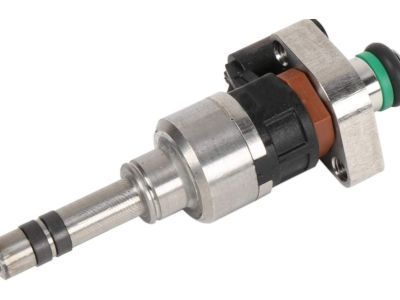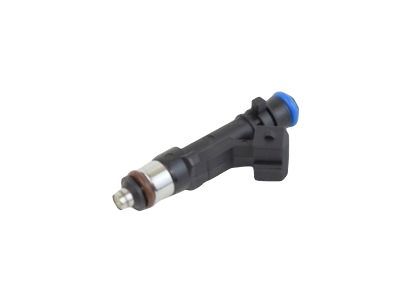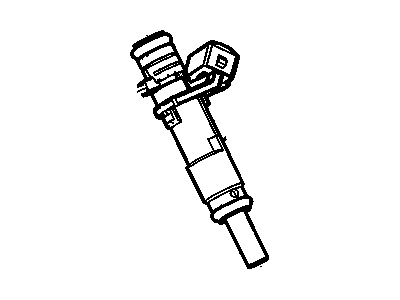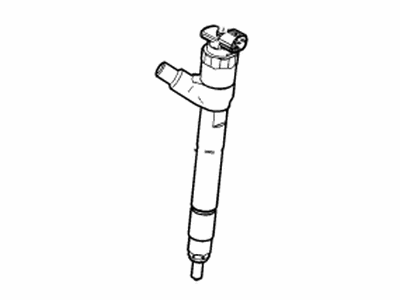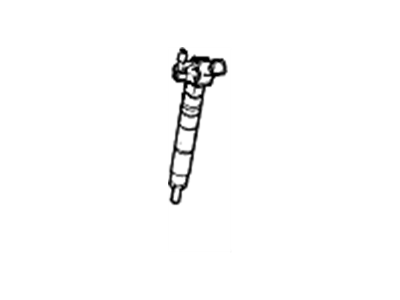My Garage
My Account
Cart
Genuine Chevrolet Cruze Fuel Injector
Gas Injector- Select Vehicle by Model
- Select Vehicle by VIN
Select Vehicle by Model
orMake
Model
Year
Select Vehicle by VIN
For the most accurate results, select vehicle by your VIN (Vehicle Identification Number).
6 Fuel Injectors found
Chevrolet Cruze Direct Fuel Injector Assembly
Part Number: 55577403$98.77 MSRP: $205.10You Save: $106.33 (52%)Ships in 1-2 Business DaysChevrolet Cruze Multiport Fuel Injector Assembly
Part Number: 55565970$34.35 MSRP: $66.45You Save: $32.10 (49%)Ships in 1 Business DayChevrolet Cruze Multiport Fuel Injector Assembly
Part Number: 55570284$39.29 MSRP: $74.14You Save: $34.85 (48%)Ships in 1-2 Business DaysChevrolet Cruze Multiport Fuel Injector Assembly
Part Number: 55596708$194.63 MSRP: $404.14You Save: $209.51 (52%)Ships in 1-2 Business DaysChevrolet Cruze Multiport Fuel Injector Assembly
Part Number: 55585712$435.37 MSRP: $821.46You Save: $386.09 (47%)Ships in 1-3 Business DaysChevrolet Cruze Direct Fuel Injector Assembly
Part Number: 55572478$103.43 MSRP: $185.52You Save: $82.09 (45%)
Chevrolet Cruze Fuel Injector
The Fuel Injector applies in Chevrolet Cruze vehicles and is mainly involved in the spraying of fuel through the engine cylinders under the regard of the Engine Control Module. This system now known as 'returnless' eliminates fuel line and provides for precise mixture of air and fuel for the engines. Problems with injectors are poor idle, lack of power, and in some occasions, damage to catalytic converters and oxygen sensors. As it is critical for a car to be performing at its premier all the time, faulty fuel injectors should be replaced as soon as possible. In today's automobiles, fuel injectors in particular Chevrolet Cruze models are useful for the optimization of the internal combustion engine where fuel flow is accurately regulated to replace the carburetor system.
Each OEM Chevrolet Cruze Fuel Injector we offer is competitively priced and comes with the assurance of the manufacturer's warranty for the part. Furthermore, we guarantee the speedy delivery of your orders right to your doorstep. Our hassle-free return policy is also in place for your peace of mind.
Chevrolet Cruze Fuel Injector Parts Questions & Experts Answers
- Q: How to replace fuel injectors and Fuel Rail on Chevrolet Cruze?A: For 2015 and earlier models, start by disconnecting the negative battery terminal and remove the engine cover if present. Relieve the fuel system pressure and then remove the air intake duct and air filter housing. Release the quick-connect fuel line fitting at the fuel rail; also, disconnect the EVAP purge line from the intake manifold, unclip electrical connectors from the fuel injectors and MAP sensor. Remove fuel rail mounting bolts as well as ground strap (if equipped). Fuel rail and injectors are removed as a single assembly making sure no O-rings were left inside injector holes. The retainer securing each injector to the fuel rail is removed, then pull out injectors. To reassemble, change old O-rings on each injector with new ones. Lubricate new injector O-rings with clean engine oil when installing them, then tighten fuel rail mounting bolts. Start engine, check for fuel leaks. For 2016 and later models, relieve the fuel system pressure and disconnect negative battery remote terminal. Remove oil filler cap and engine cover fasteners; lift up engine cover with valve cover insulator reinstalling oil filler cap if needed. Take out ignition coils and charge air cooler outlet hose. Disconnect harness connectors from both fuel rail and camshaft position sensor moving wiring harness aside. Remove sound insulator around high-pressure pump body of fuel pump area. With a flare-nut wrench, unscrew intermediate high-pressure line fittings between where they enter or exit from their respective cylinders' heads so that you can get access into removing bracket bolt which holds those lines together at this location while leaving nuts attached but without taking off any bolts connecting them together yet! Try loosening encapsulated bolt threads on such an engine block not trying to loosen them up too much though since these may cause further problems like stripping out their threads entirely just like any other kind of automotive fastener would presumably be possible instead given how tightly these two parts of any typical modern-day automobile engine are held together or even! Special demounting screws and support tools should be installed for the injectors. Use slide hammers to tap them upward gently in a very even manner ensuring that they don't tilt as they are being removed from their holes. Put assembly on workbench, then remove slide hammers and secure it in vise. Fasten special calibration tools onto these injectors turning them clockwise instead. Disconnect fuel injector electrical connector, take off support plate bolts, supports and also demounting screws specific injector under replacement; remove injector, replace its O-ring seal with new one and put it back into fuel rail. Support plate should be removed but leave at least one support assembly on each injector before installing Teflon combustion seals with kit provided by manufacturer, which involves removing these parts from all others as well; coat non-hardening thread locking agent over newly purchased fuel injector mounting bolts too before finally tightening this down securely within cylinder heads where old ones held fast previously, Make sure you observe cleanliness of injectors' bores inside head block completely free from any kind dirt whatsoever including oil residue left behind because after all didn't really want anything getting gummed up next time around when this happens again here nearly everyone else isn't likely going care much either! Calibration instruments must be disconnected from ends each of at time being inserted into bore just before lowering entire unit itself onto top side engine using fuel rail assembly being lowered by means lowering itself directly on top surface motor where such a procedure literally takes place within seconds rather than minutes otherwise might happen without any sort major problems arising during course thereof maybe could have been better off avoiding such an unpleasant situation altogether by not having had introduce some unnecessary complications along way since both parts finally ended up getting ruined anyhow!! Press down until they touch seats while starting several different sizes M6 through M8 depending upon what style bolt head requires holding place tight turn counterclockwise one time only clockwise until tight, lastly, repeat this process moving back forth in same order when it comes installation steps completed by reversing the removals look also ensure there aren't any fuel leaks once after starting-up engine.

